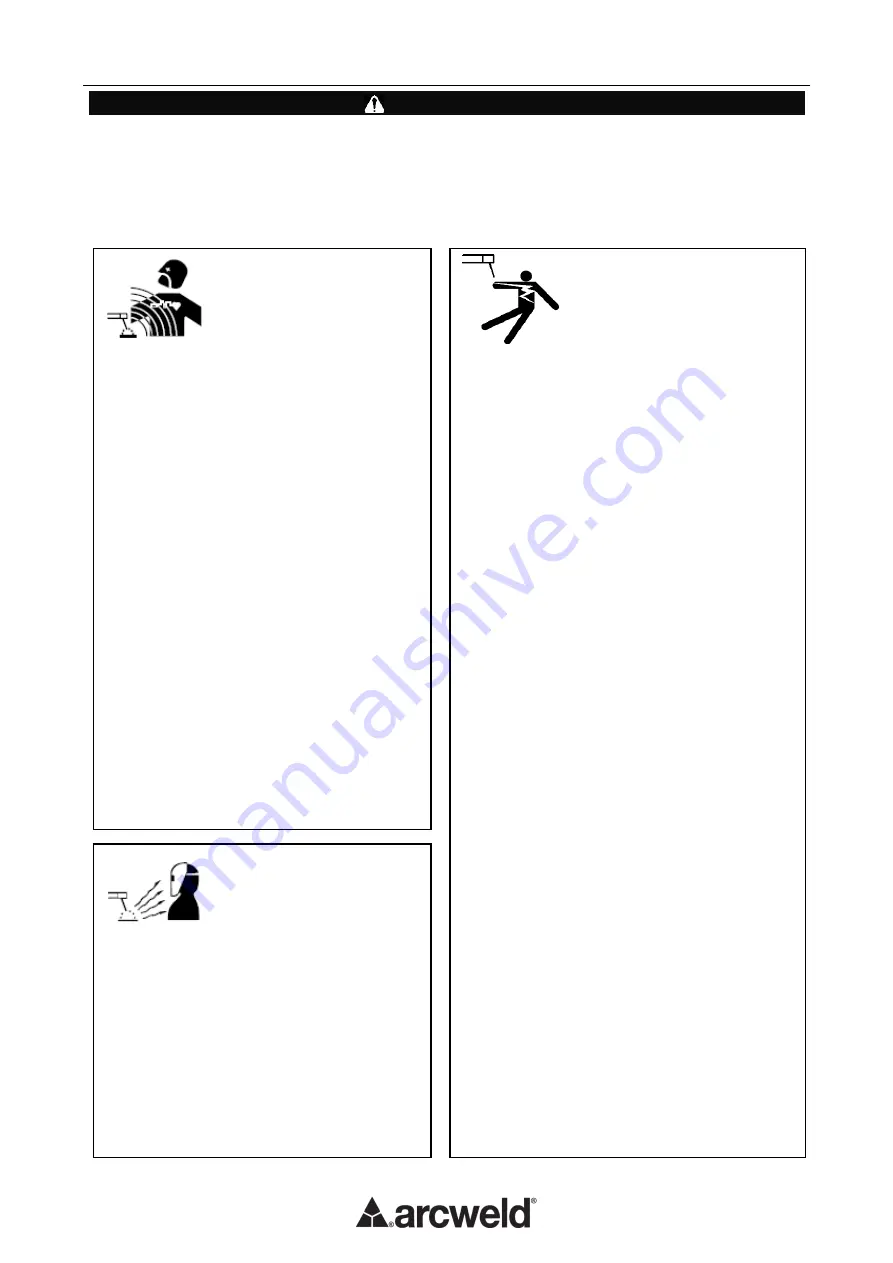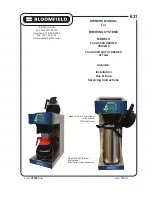
i
SAFETY
i
ARC WELDING CAN BE HAZADOUS. PROTECT YOURSELF AND OTHERS FROM
POSSIBLE SERIOUS INJURY OR DEATH. KEEP CHILDREN AWAY. PACEMAKER
WEARERS SHOULD CONSULT WITH THEIR DOCTOR BEFORE OPERATING.
BE SURE THAT ALL INSTALLATION, OPERATION, MAINTENANCE AND REPAIR
PROCEDURES ARE PERFORMED ONLY BY QUALIFIED INDIVIDUALS.
ELECTRIC AND
MAGNETIC FIELDS
may be dangerous.
1.a Electric current flowing through any conductor
causes localized Electric and Magnetic Field
(EMF). Welding current creates EMF fields
around welding cables and welding machines.
1.b EMF fields may interfere with some
pacemakers, and welders having a pacemaker
should consult their physican before welding.
1.c All welders should use the following procedures
in order to minimize exposure to EMF fields
from the welding circuit:
1.d.1 Route the electrode and work cables
together
– Secure them with tape when
possible.
1.d.2 Never coil the electrode lead around your
body.
1.d.3 Do not place your body between the
electrode and work cables. If the
electrode cable is on your right side, the
work cable should also be on your right
side.
1.d.4 Connect the work cable to the workpiece
as close as possible to the area being
welded.
ARC RAYS can burn.
2.a Use a shield with the proper filter and cover
plates to protect your eyes from sparks and the
rays of the arc. Headshield and filter lens
should conform to AS 1338.1 standard.
2.b Use suitable clothing made from durable flame-
resistant material to protect your skin and that
of your helpers from the arc rays.
2.c Protect other nearby personnel with suitable,
non-flammable screening and/or warn them not
to watch the arc nor expose themselves to the
arc rays or to hot spatter or metal.
ELECTRIC SHOCK can
kill.
3.a The electrode and work (or ground) circuits are
electrically “hot” when the welder is on. Do not
touch these “hot” parts with your bare skin or wet
clothing. Wear dry, hole-free gloves to insulate
hand.
3.b Insulate yourself from work and ground using dry
insulation. Make certain the insulation is large
enough to cover your full area of physical contact
with work and ground.
In addition to the normal safety precautions, if
welding must be performed under electrically
hazardous conditions (in damp locations or
while wearing wet clothing; on metal structures
such as floors, grating or scaffolds; when in
cramped positions such as sitting, kneeling or
lying, if there is a high risk of unavoidable or
accidental contact with the workpiece or
ground) use the following equipment:
Semiautomatic DC Constant Voltage (Wire)
Welder.
DC Manual (Stick) Welder.
AC Welder with Reduced Voltage Control.
3.c In semiautomatic or automatic wire welding, the
electrode, electrode reel, welding head, nozzle or
semiautomatic welding gun are also electrically
“hot”.
3.d Always be sure the work cable makes a good
electrical connection with the metal being welded.
The connection should be as close as possible to
the area being welded.
3.e Ground the work or metal to be welded to a good
electrical (earth) ground.
3.f Maintain the electrode holder, work clamp, welding
cable and welding machine in good, safe operating
condition. Replace damaged insulation.
3.g Never dip the electrode in water for cooling.
3.h Never simultaneously touch electrically “hot” parts
of electrode holder to two welders because voltage
between the two can be total of the open
circuit voltage of both welders.
WARNING




































